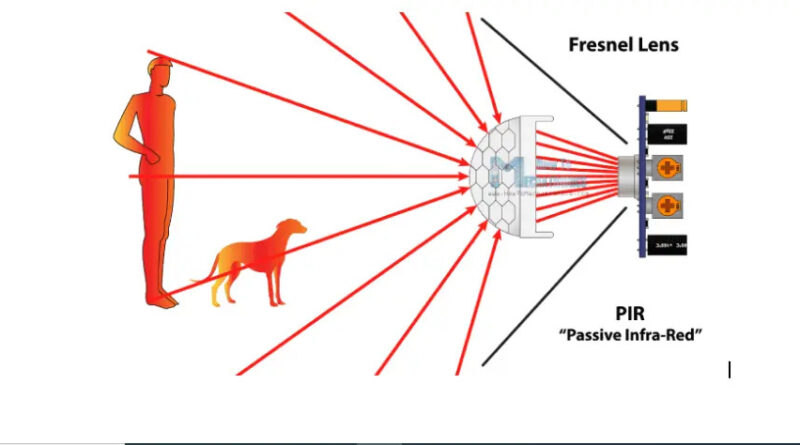What Is Motion Sensors? How It Works, Types, Applications
Many new smart home and industry gadgets now use motion sensors. These sensors help with everything from alarms to lights, saving energy and collecting useful data along the way. The main types of motion sensors you’ll find are passive infrared (PIR), microwave, and dual tech/hybrid. Here’s how they work.
What Are Motion Sensors?
Motion sensors are small devices that can talk to each other and are used to detect movement in a specific area. These sensors are very important and are a core part of the Internet of Things (IoT), which includes various types of sensors. They are so useful because they help devices interact with what is happening around them. For example, they can set alarms or trigger other actions when they detect movement.
Types Of Motion Sensors
There are many types of motion sensors available, each designed for specific uses and benefits. Major types include passive infrared (PIR), ultrasonic, microwave, tomographic, and composite sensors.
Ultrasonic Sensor
Ultrasonic sensors work either by listening for specific sounds (passive) or by emitting sound waves and measuring the echo (active). These sensors are very sensitive and can quickly detect movement but can accidentally react to non-threatening sounds, leading to false alarms. They can also disturb household pets like dogs and cats with their high-frequency sounds.
Passive Infrared (PIR) Sensor
This sensor detects body heat (infrared energy) from humans and animals. They have a special material that reacts to heat by creating electricity, which triggers an alarm like a home security system. PIR sensors are popular because they are cheap, energy-efficient, and very durable. They are generally used indoors.
Tomographic Sensor
Tomographic sensors use radio waves to detect movement. They can see through walls and are usually set up to cover large areas, creating a network of radio waves. They are mostly used in places that require strong security like warehouses. These sensors are very expensive due to their high-tech capabilities.
Microwave Sensor
These sensors send out microwave pulses and measure the reflections of moving objects to detect motion. They are highly sensitive and can detect movement through non-metallic objects, which can be a problem as they can move out of the intended area. They consume more power, so they turn on and off frequently to save energy. Knowing they’re on/off cycles can help one avoid detection.
Benefits Of Using IoT Motion Sensors
IoT motion sensors are handheld devices that can wirelessly send alerts when they detect movement. This feature is great for placing sensors in places that are hard to reach and still keeps you updated by sending information to a central system like a hub, cloud server, or an app on your phone.
Here are some of the benefits of using these motion-detecting devices:
- Better Home Security: They can alert you when someone approaches your door or window.
- Keeping Tabs on Restricted Areas: If someone goes to a place they tell you they shouldn’t be at work or other facilities.
- Energy Savings: They help control how long lights stay on in rooms, outdoor areas, or offices, saving electricity.
How To Install Motion Sensors?
Installing motion sensors can make your home safer and help control lights automatically. Here’s a simple guide to help you set them up correctly.
1. Choose An Installation Spot
First, choose where you want to place the motion sensor. Good places include doorways, walkways, outdoor areas, and any room you want to keep an eye on. Make sure nothing like furniture or walls is blocking the view of the sensor.
2. Check Power Source
Motion sensors can be powered by batteries or connected to your home’s electrical system. If your sensor needs to be wired, be sure to turn off the power at the circuit breaker to be safe.
3. Install The Sensor
If your sensor uses batteries, you can attach it with sticky strips or screws. If it requires wiring, you’ll need to drill holes to run the wires through and secure the sensor with screws and wall plugs.
4. Set The Sensor
Once it’s in place, link the sensor to your home system and adjust the settings. You can change how sensitive it is, how long it waits before turning on, and more. Check the instructions that came with your sensor to set it up correctly.
5. Test And Adjust
Turn on the sensor and test it by moving it around the area to make sure it detects motion correctly. If it doesn’t work as expected, you may need to move it or change its settings. Make sure it covers the area you want without any false alarms or missing anything.
By following these steps, you can successfully install motion sensors that make your home more secure and convenient.
You must know about these terms also:-
- Digital Signal Processor in Embedded System and Embedded DSP Types
- What Is HMI, Human Machine Interface Applications and Working Principle
- Types of Converters in Power Electronics and Explain Advantages and Disadvantages of Power Converters
FAQs – Questions & Answers
Q1. Can Turn On The Lights Trigger The Motion Sensor?
Yes, turning on a light can trigger a motion sensor. If the sensor is designed to detect changes in light like a PIR sensor, turning on the light suddenly can make it think there is movement.
Q2. Can Motion Sensors Work In Complete Darkness?
Yes, many motion sensors can work in the dark. They use special techniques to detect movement without the need for light. For example, PIR sensors pick up changes in heat, so they can see heat from hot objects even in complete darkness. Other types such as microwave and ultrasonic sensors also work well in the dark because they do not rely on light at all.

